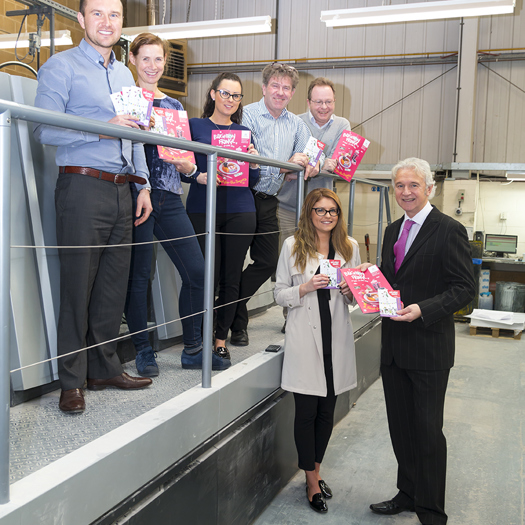And yet this is a print run that has continued to come down in recent years, despite research that highlights how valuable visitors to the event find the printed guide.
According to Olly Davies, head of marketing and development for the Fringe Society, which supports the running of the festival, 80% of Fringe-goers say the printed programme is the “single most important decision-making tool” they use to select which shows to see.
But the organisation’s use of print has been impacted by one of the eight key commitments that form part of the ‘Fringe Blueprint’, which aims to “reduce the festival’s carbon footprint and champion initiatives that limit our impact on the environment”.
Davies says this commitment, combined with an increasing move over time by customers to the festival’s website and app, “will see us reduce the volume of print we produce over the next few years”.
While much of the Fringe Society’s print requirement is placed within Scotland, the programme is printed in Yorkshire by Pindar, part of the YM Group, because there are no web presses north of the border.
It is distributed to locations across the UK in advance of and during the August event, including multiple Scottish towns and cities, London and Brighton among others.
The number of programmes produced for this year’s event was down by more than 10% from the 390,000 printed in 2017 and Davies says the Fringe Society has committed to reducing the volume of printed material it produces by 35% by 2022.
He adds all of the organisation’s paid-for advertising has also been shifted to digital channels “as part of our green commitments”.
“That said, our audiences still tell us that certain types of print – particularly the programme – are important in making a decision on which shows to see, so we always try to strike a balance between on and offline channels.”
Greg Selfe, country manager at paper advocacy group Two Sides, says there are numerous misconceptions surrounding the environmental impacts of print vs digital and that organisations need to consider that “every type of communication has an impact”.
“By reducing their paper consumption and their use of print they are only shifting that impact into another medium,” he says.
“We know from our research that digital communication does have an environmental impact, the perceptions of which almost don’t exist.
“So few people, both consumers and businesses, realise or grossly underestimate just how much of an impact electronic communication has. Every time you send an email, CO2 is emitted within that communication.
“So it is often difficult for companies to say that they are stopping using print to save on carbon when really they are just moving that impact somewhere else.”
With its anti-greenwash campaign, Two Sides continues to actively engage with organisations that it has found to be using unsubstantiated environmental claims about the use of paper.
It has successfully challenged numerous financial organisations, utilities and telecoms companies to change or remove misleading messages.
Selfe says many of these businesses “are telling tens of millions of customers that they are moving them to digital because it’s better for the environment or that they’re saving forests”.
But he adds it is becoming more apparent that other types of organisations are also making similar claims.
“We see these messages everywhere from email signatures to massive corporations to festivals, so of course it’s going to have a damaging impact.
“There are so many instances of greenwash, whether that’s through ignorance or misunderstanding, that there are companies that are going electronic in the hopes of being better for the environment.”
Selfe says research has shown that customers and consumers “still overwhelmingly prefer” print in many instances and that there is work to do to educate and inform company decision-makers about what they can do with their existing print to make it “as environmentally friendly as possible”, such as the choice of paper, ink or printer that they use.
Innovative forms of recycling and repurposing have also continued to emerge, particularly at events. Fringe organisers encourage visitors to share and pass on their programme, with a dedicated section in the publication for them to write their own show recommendations for others.
While the Fringe Society may be steadily reducing its use of print, it is still impossible to miss during the festival, with leaflets, posters and hoardings seen across the city alongside the programme and other listings publications.
Edinburgh-based printer Out of Hand Scotland has handled the production of the festival’s outdoor posters for the last six years.
“We probably print the equivalent of 7,000 metres of Correx end-to-end and we also print some items on PVC banners and mesh,” says Out of Hand commercial director Nigel Muntz.
“We do everything right from identifying suitable sites to building temporary structures, printing everything, installing it in the right place, tracking it so that we know exactly what is where, and then taking it all down.
“At the end we recycle the Correx and the banners are repurposed to make into bags.”
Muntz stresses “the vital role” that print continues to play in the festival, “right from people handing out flyers through to the visual impact in the streets for people to see what’s happening”.
He concludes: “It transforms the city. You can’t beat walking down the street and seeing a picture of a favourite comedian.”










